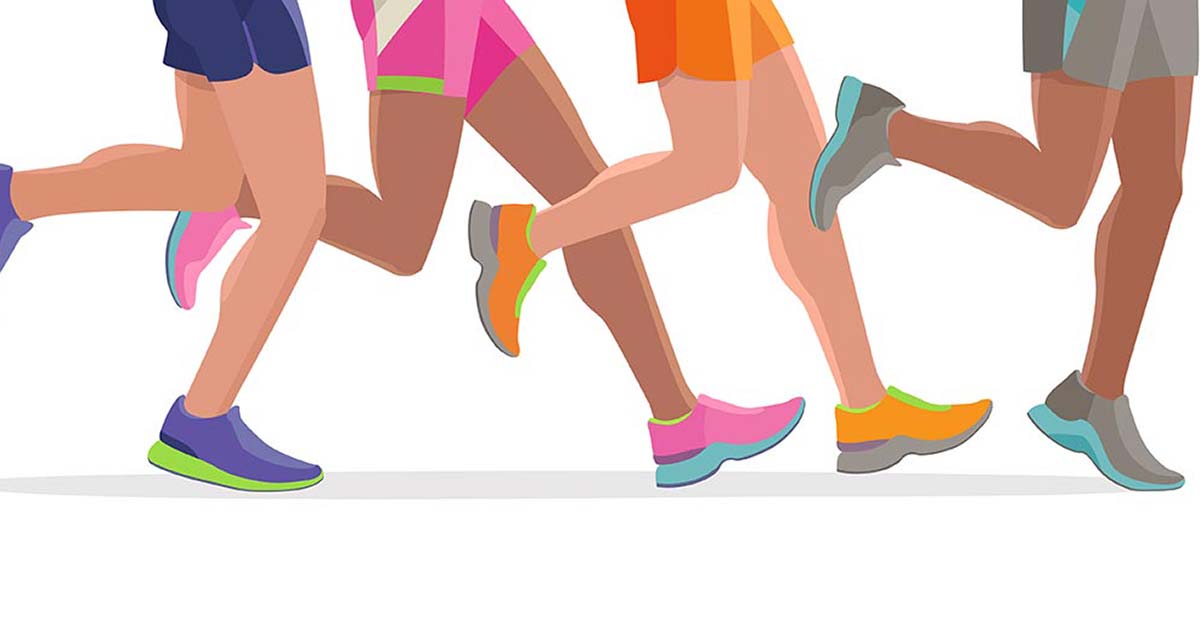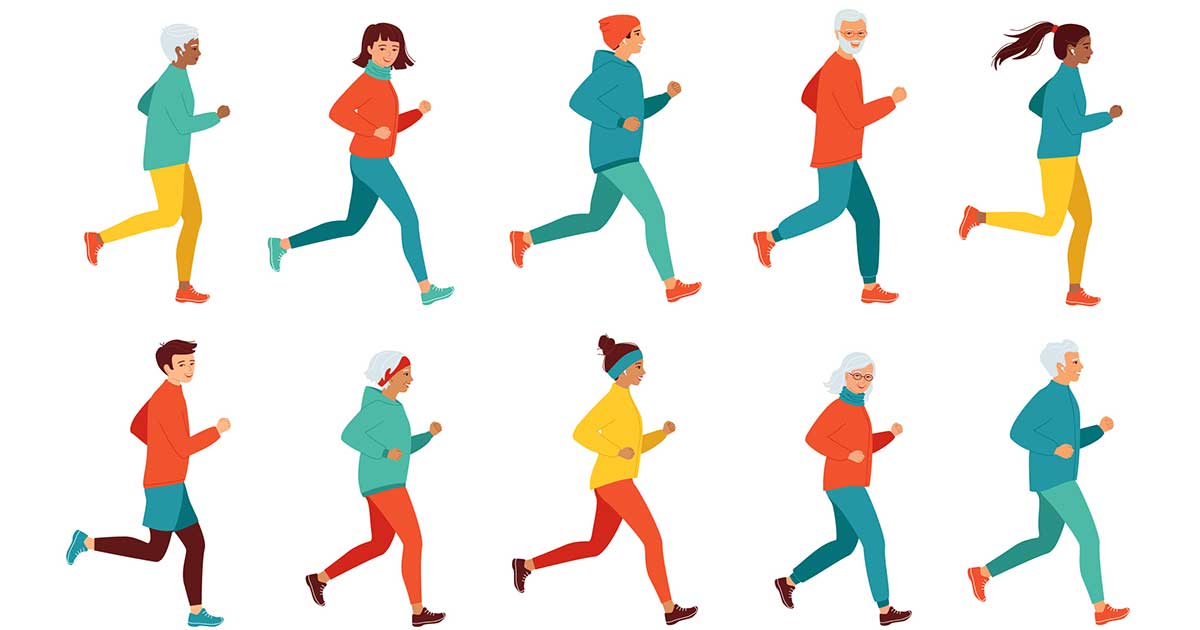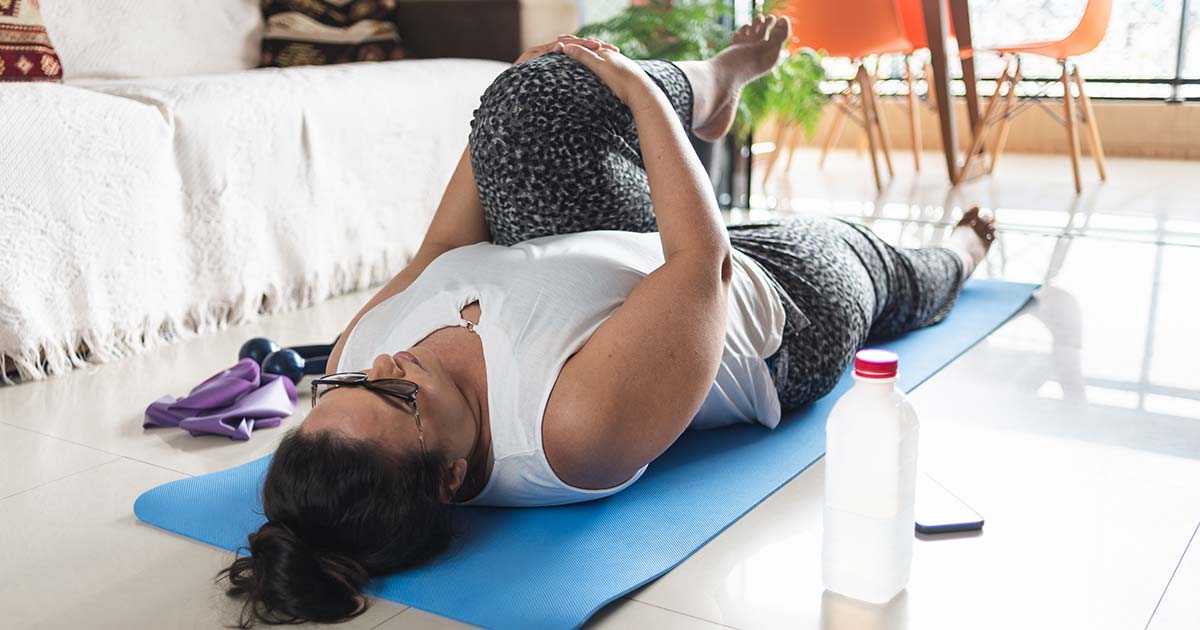
Advice to improve your movement, fitness, and overall health from the #1 in orthopedics in the U.S.
How to Get Into (or Back Into) Running
Exercise physiologist and certified running coach Pamela Geisel shares how to start off on the right foot to avoid injury and enjoy the journey.
Advice to improve your movement, fitness, and overall health from the #1 in orthopedics in the U.S.

While running’s apparent simplicity is part of its appeal, it also makes it easy for new runners to do too much too soon. That’s when injuries happen, which can sideline a would-be runner for weeks or even months—or deter them permanently. That’s why the most important thing to do before getting into running is to check your mindset.
“A lot of people think about running as a way to get in shape, but you should be in shape to run,” says Pamela Geisel, MS, CSCS, an exercise physiologist and manager of Performance Services at the HSS Tisch Sports Performance Center. “Running is a series of single-leg hops. That takes a certain amount of strength and stability.”
Not being properly prepared can also backfire for people who are in great shape from another sport. “Each sport has unique demands. You could put a marathon runner in the pool and they may not be able to swim a single lap,” says Geisel. “Going the other way, a swimmer isn’t used to the high impact of running. There’s a very different demand on the body.”
Fortunately, it’s also not that difficult to set yourself up for safety and success as a new or returning runner. Here, Geisel shares the steps she walks clients through, whether they’re easing in after an injury or working toward their first 5K.
Step 1: Get Assessed
Running is essentially a controlled fall—one that happens over and over. You’re never on both feet at the same time until you stop. “A typical running cadence is 165 to 185 foot strikes per minute,” says Geisel. “If you can’t stand on one foot without falling over, imagine doing that 1,650 times in a 10-minute run.” That’s why an assessment for balance, strength and mobility is an important first step in anyone’s running career. You’ve got a few options:
Go to a pro. Exercise physiologists and certified personal trainers can do a full-body assessment and explain how you can address any issues they find. The HSS Performance Center offers a specialized running analysis, which includes a video analysis of how the body moves during running, as well as functional assessments of strength and balance and an exam focused on the unique makeup of the participant’s muscular and skeletal systems.
Or assess yourself. Want to get going ASAP? There are a few simple ways to check whether you’re ready to run. For example, you should be able to balance on each foot individually for 30 seconds with your eyes open and 10 seconds with your eyes closed. You should also have enough core strength to hold a side plank for 45 seconds on each side and be able to do basic leg exercises like calf raises and squats without pain. If this isn't the case just yet, stick to your walking workout and build up your strength and stability in the gym (more on this in Step 3, below).
Regardless of who assesses you, record the results either digitally or in a running journal. It’s a good idea to reassess your fitness a few times a year or whenever you’re thinking of trying something new. By keeping notes, you’ll be able to see how far you’ve come.
Step 2: Get in Gear
One of the biggest mistakes Geisel sees in new runners is related to footwear. “You should not be going off for a run in your walking shoes,” she says. That’s a recipe for injury.
Every time your foot hits the ground, it absorbs the force of the impact. This is referred to as ground reaction force, or GRF. When you increase your speed, GRF increases, too. When running, your feet can be absorbing two to three times your body weight. That’s why not just any type of shoe will do.
Running shoes are specially and scientifically designed to help protect you from injury as your body responds to these forces. Even so, they will break down over time, which is why you should replace your running shoes every 400 miles. (Often, new pain in a knee or ankle is a sign you’re due for new shoes. But it’s better to track your mileage and replace them before you get to that point.)
Before you shop, a few words of warning:
Look beyond the brand. “Don’t just buy the shoes your best friend has or get attached to a specific brand,” says Geisel. Running shoes aren’t fashion statements—they’re essentially safety gear. You need them to feel good and fit properly. (It’s also OK if they aren’t your favorite color.)
Go for a pro fitting. “At a running specialty store, there are experts who can help you find the right shoe for you,” says Geisel. They’ll measure your feet, look at your arches and maybe even have you run around the store. Then they’ll use what they learn to choose some shoes that will best suit your unique needs.
If at first you don’t succeed, try, try again. Most places that sell running shoes (in person or online) have generous return policies. So if you take the shoes out for a spin and they don’t work out or they cause you pain, take them back and ask to try another pair.
Step 3: Get with a Program
For starters, ease into running—no matter how fit or motivated you may be. “Don’t just go out and run for 20 minutes,” says Geisel. “Going from zero to 20 is a significant change!”
You may have heard about couch-to-5K programs, which are designed to progress people gradually. While many people want to know which program is best or gets the fastest results, it’s more important to do what works for you, says Geisel. There are some general parameters, though.
Think in 5-minute time blocks. "You can start by running for one minute and walking for four minutes, then repeat that four times for a total of 20 minutes. Add the warmup and cool down of your choice for five minutes each, and you have a complete workout.
Build gradually. How do you know when you’re ready to increase the amount of time or the distance you run? Wait until your current program feels easy, says Geisel. “Don’t just think, ‘Oh, two weeks have gone by, so I should do more.” She suggests starting out with three runs a week, with off-days in between.
Add strength training. “Running is a full-body sport,” says Geisel. “It’s important to do a minimum of two full-body 30-minute strength-training sessions per week.” As with running, you can break that up depending on your schedule. For example, you could do six 10-minute sessions, with each focusing on a different muscle group. This Resistance Training at Home program is a good place to start.
Listen to your body. It’s one thing to feel like you’ve done a new workout, but if you have pain on just one side of the body or if the pain is severe or comes on fast, stop. Also pay attention to whether you’re starting to change your gait because you’re tired or something hurts. “When that happens, you need to shut it down,” says Geisel. “See an exercise physiologist or physical therapist for help figuring out what’s going on before you create even bigger issues.”
Sometimes seeing a dietitian can help, too. If you’re feeling fatigued or having GI issues, changing how you refuel may be just what the doctor ordered.
Step 4: Get Going!
Geisel’s final piece of advice? Don’t overthink what you’re doing when you go out for your first few runs. “People read an article or watch other runners and try to change their own gait to match,” she says. “I don’t recommend that. If you’ve got the right shoes and proper programming, just go for your run and do what works for you.”
The HSS Performance Center offers a fully online four-week strength-training class for runners. Each group is capped at six students, so you’ll get individualized attention, and groups will be added as needed to accommodate new participants. To learn more, send an email with your contact information to: sportsperformance@hss.edu.
Published 10/28/2021

